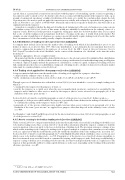Page 571 - SAIT Compendium 2016 Volume2
P. 571
IN 65 (2) Income Tax acT: InTeRPReTaTIon noTes IN 65 (2)
a pro t, then as a general rule a transaction entered into with the purpose of not making a pro t, or in fact registering a loss, must, in order to satisfy s 23(g), be shown to have been so connected with the pursuit of the taxpayer’s trade, eg on ground of commercial expediency or indirect facilitation of the trade, as to justify the conclusion that, despite the lack of pro t motive, the moneys paid out under the transaction were wholly and exclusively expended for the purposes of trade (cf Nemojim’s case (supra) at 947H-948A). Generally, unless the facts speak for themselves, this will call for an explanation from the taxpayer.’
A question to consider is whether the disposal of trading stock forming part of the sale of a business as a going concern falls within section 22(8)(b)(ii). A sale of this nature would not ordinarily be undertaken in the ordinary course of a taxpayer’s trade. However, for this provision to apply the selling price must also be below market value. It is accepted that a sale of all the trading stock on hand may itself have a bearing on the price it would fetch in the market. For example, an arm’s-length buyer of a business as a going concern will usually acquire trading stock at book value and in these circumstances book value would generally comprise the market value.
4.3.3 Distribution of trading stock in specie [section 22(8)(b)(iii)]
A company must include in its income the market value of trading stock which it has distributed in specie to any holder of shares on or after 21 June 1993. The term ‘distribution’ is not de ned in the Act and must therefore be given its common-law meaning for the purposes of section 22(8). In CIR v Legal & General Asurance Society Ltd* Steyn CJ ascribed to the word ‘distribute’ in the context of the de nition of a ‘dividend’ at the time the wider meaning of –
‘apportion, appropriate, allocate or apply towards’.
He pointed out that the word should be de ned with reference to the relevant context. It is submitted that a distribution relates to something given to a holder of shares without receiving consideration for it and without imposing an obligation to return it. Typical examples include the payment of a dividend or a return of capital. A disposal of trading stock for full consideration is therefore not a distribution. A disposal of trading stock to a holder of shares for less than its market value must be considered under section 22(8)(b)(ii).
4.3.4 Trading stock applied for other purposes [section 22(8)(b)(iv)]
A taxpayer must include in income the market value of trading stock applied for a purpose other than – • a disposal in the ordinary course of trade; and
• in the circumstances described in section 22(8)(a) (4.2), (b)(i) (4.3.1), (ii) (4.3.2) or (iii) (4.3.3).
Through a process of elimination it is evident that section 22(8)(b)(iv) was intended to cover, for example, trading stock which is –
• consumed by the taxpayer for the purposes of trade; or
• used by the taxpayer as a capital asset when the asset is manufactured, produced, constructed or assembled by the
taxpayer and is similar to other assets so made by the taxpayer (that is, assets referred to in paragraph (jA) of the de nition of the term ‘gross income’).
Section 22(8)(b)(iv) must be read with paragraphs (a) and (d) of the proviso to section 22(8). In this regard see –
• paragraph (a) of the proviso which enables the taxpayer to potentially claim a deduction for trading stock which is used
or consumed in carrying on the taxpayer’s trade (see 4.5); and
• paragraph (d) of the proviso which prevents double taxation when assets referred to in paragraph (jA) of the
de nition of the term ‘gross income’ are applied for a purpose other than disposal in the ordinary course of trade (see 4.8).
See Examples 3 and 4 in 4.5 and 4.8 respectively for the interaction between section 22(8)(b)(iv) and paragraphs (a) and (d) of the proviso to section 22(8).
4.3.5 Assets ceasing to be held as trading stock [section 22(8)(b)(v)]
Under section 22(8)(b)(v) a taxpayer must include in income the market value of assets held as trading stock which cease to be held as trading stock. Since section 22(8)(b)(v) deals with a situation in which the taxpayer continues to hold the assets in question, it does not apply to the loss or destruction of trading stock. The provision envisages a change of use which results in trading stock ceasing to be trading stock. A typical example is a taxpayer that commences to use trading stock as a capital asset with the result that the asset falls outside the de nition of the term ‘trading stock’ in section 1(1). Section 22(8)(b)(v) must be read with paragraph 12(3) of the Eighth Schedule which establishes a base cost for an asset which ceases to be held as trading stock – see 5.3. Paragraph (a) of the proviso to section 22(8) deems expenditure to have been incurred on an asset that is used or consumed in carrying on the taxpayer’s trade. Such usage would include a taxpayer ceasing to hold an asset as trading stock because the asset has been deployed in the trade as a capital asset. The taxpayer is thus potentially enabled to claim capital allowances on the asset, depending on the wording of the particular allowance provision – see 4.5.
* 1963 (3) SA 876 (a), 25 SATC 303 at 315
saIT comPendIum oF Tax LegIsLaTIon VoLume 2 563


